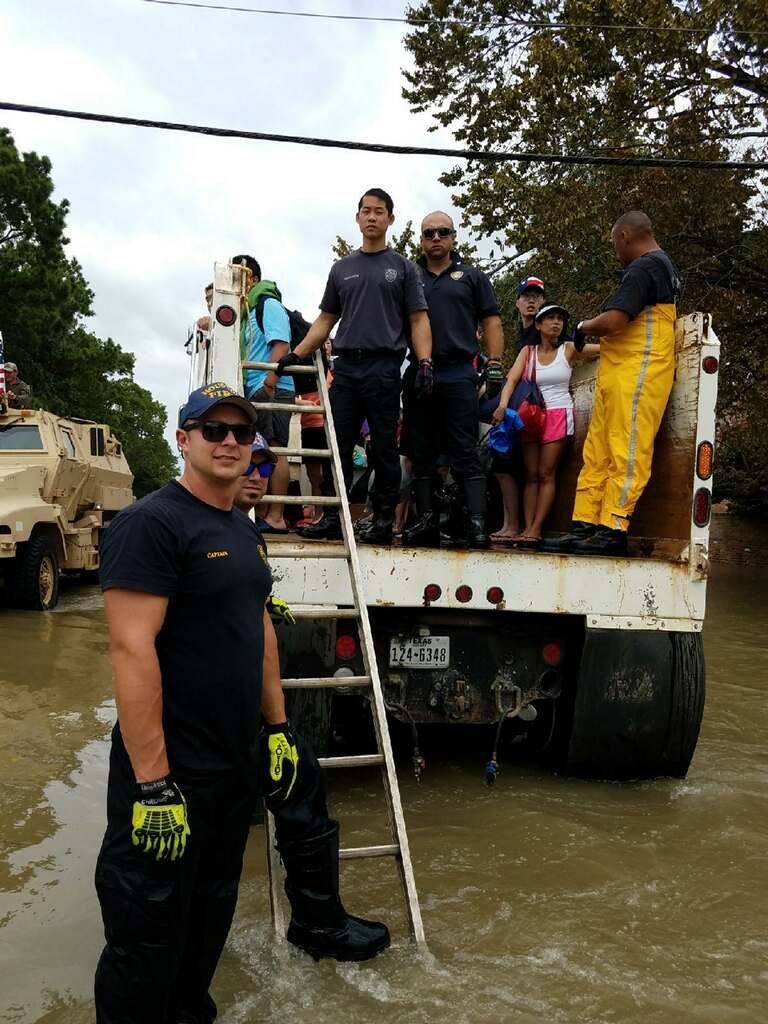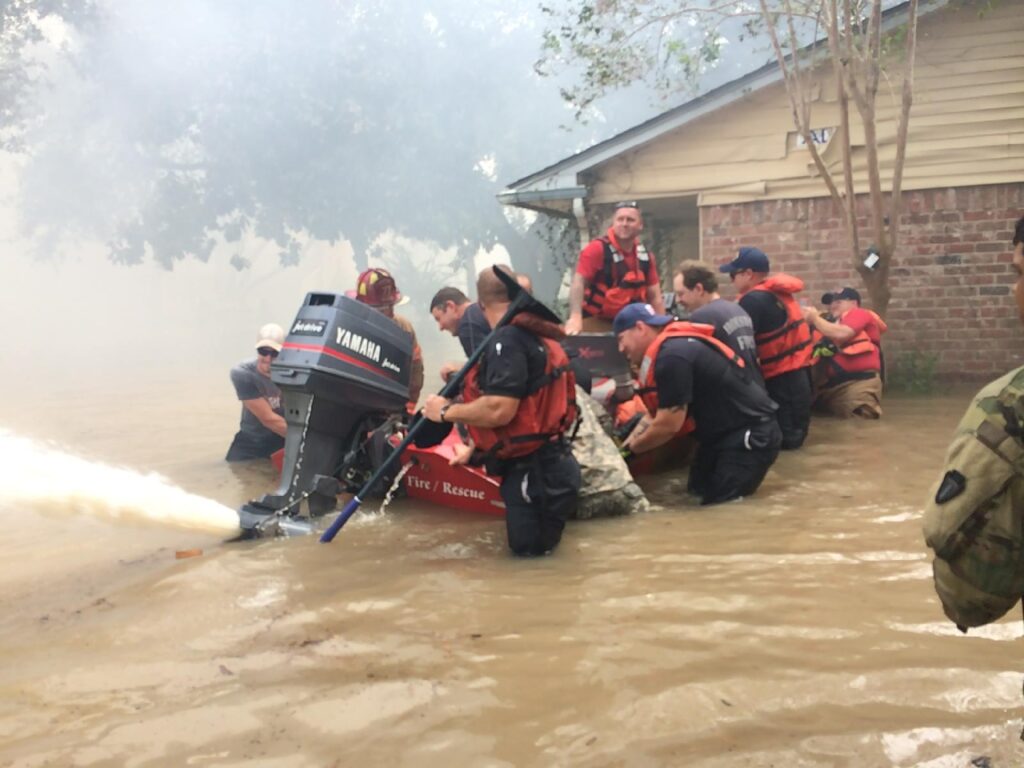By Graciela Cortez

In times of crisis, we know the numbers to call. First responders work 24/7, rain or shine, to ensure the public’s safety. Over time, the first responder network has evolved to serve the community in times of crisis. Although hurricanes and floods have plagued Houston since its founding in 1836, Hurricane Harvey was an unprecedented catastrophe that took some of the most seasoned professionals by surprise. As Houston Fire Department (HFD) Station 8’s fire- fighter and emergency medical technician (EMT) Thomas Wolcott affirmed, first responders always build on previous experience and aim to “prepare better for the next storm.” Hurricane preparations begin long before an expected storm season. Dr. David Persse, physician director of HFD Emergency Medical Services (EMS) and the public health authority for the City of Houston, stated, “The biggest preventive measure we’ve done is the training that occurs during … the off-season.” Formal preparations include mock drills, training, revision of emergency procedures, and determining evacuation routes. Additional measures involve ensuring that back-up generators are working, equipment is in the right place, and trucks are filled with gas. The duration of emergency situations can never be predicted, so first responders must also arrange for the safety of their families while they are away on duty.
By the time Hurricane Harvey hit Houston, firefighters, EMTs, paramedics, police officers, and medical staff had done their best to prepare for its arrival. Yet, despite all the planning, Harvey’s unprecedented rainfall did not allow for full preparation. HFD District 5’s chief, Robert Branch, believes that “nothing could have prepared us for Harvey. … The best-laid plans in any municipal emergency operation center couldn’t have prepared [us] for that.” Reports support that assessment: Southeast Texas received over fifty inches of rain, while some parts of Harris County received over forty inches during Harvey’s five-day rainfall period. This storm exceeded the anticipated 500-year, four-day rainfall event by over nine inches.

HFD Station 49 members also employed unconventional measures while performing their duties. Despite the harmful substances in flood water, a firefighter dove underwater to connect a hose to a hydrant so they could battle a house fire. In another case where resources fell short, they worked with a volunteer group from the Austin Fire Department that used the propellers on their motorboat to shoot water at the flames. “That’s the nature of the fire service,” Chief Branch asserted, “We’re going to make it work no matter what.”
Capt. Lilley echoes that sentiment. During the storm, he conducted a rescue involving a special needs child with autism and his family. Lilley’s team initially tried to evacuate them in the back of a dump truck, but the child refused to get in the truck. Aware of the “high-stress environment,” Lilley got a rescue boat to take the boy to the water’s edge to help ease his anxieties. Having two sons of his own with special needs, Capt. Lilley tried “to go the extra mile to get to where they need[ed] to be.” Luckily, the child really liked the boat and the responders were able to take the family to safety. Unexpected complications were not uncommon for responders during Hurricane Harvey, but many of them, quick to think on their feet, rose to the task.
Click here to read the full article or click on Buy Magazines to purchase a print copy or subscribe.

 Follow
Follow